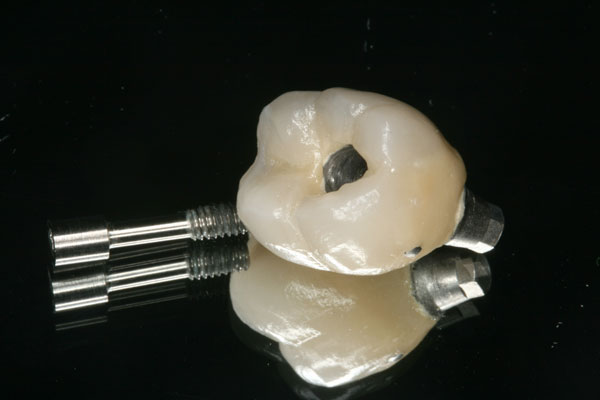Abutments and connections
What is the best abutment material for single-implant crowns?
All abutments – either metallic or ceramic, with internal or external connections, in anterior or posterior cases, cemented or screwed – have similar clinical results.
And for a fixed partial denture, which abutment material should I use?
Zirconia abutments are still lacking sufficient longitudinal data for partial fixed dentures. Therefore, only metallic abutments can be recommended. Metallic abutments are suitable for either internal or external connections and for cemented or screw-retained restorations.
Despite various limitations of the review, a meta-analysis of about 6,000 abutments from 60 studies with an estimated medium 5-year survival rate of 96.5% was performed. Regarding failures and complications, no statistical significance was noted either for single or partial restorations, or for cemented/screwed or external/internal connections. There is still limited evidence available regarding ceramic abutments in posterior areas, especially for partial fixed dentures.
Although the results were not statistically significant, external connections were more frequently associated with screw loosening and ceramic abutments fractured more often.
More studies are required on ceramic and monolithic reconstructions. The studies should use more reliable research parameters and have enough statistical significance to shed light on materials used, connections, and type of retention of the restorations. Proper documentation is highly recommended to obtain valid conclusions for clinical practice.
Although the results were not statistically significant, external connections were more frequently associated with screw loosening and ceramic abutments fractured more often.
More studies are required on ceramic and monolithic reconstructions. The studies should use more reliable research parameters and have enough statistical significance to shed light on materials used, connections, and type of retention of the restorations. Proper documentation is highly recommended to obtain valid conclusions for clinical practice.

- 1. For a single-implant crown, all abutment materials, connections and types of retention have similar clinical results
- 2. For fixed partial prostheses, zirconia abutments are still not recommended because of lack of evidence